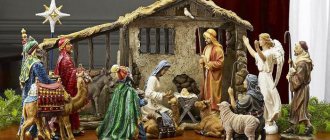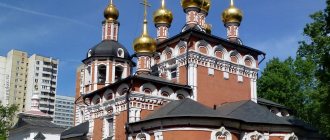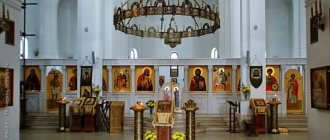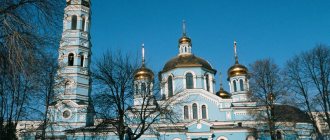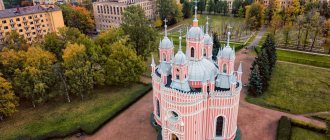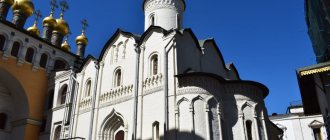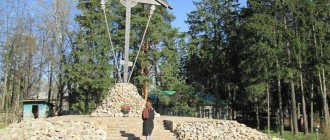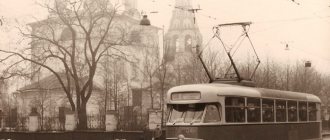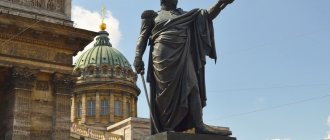Mir
Palestine Church of the Nativity (Bethlehem) Map loading...
{"format":"leaflet","minzoom":false,"maxzoom":false,"limit":50,"offset":0,"link":"all","sort":[""], "order":[],"headers":"show","mainlabel":"","intro":"","outro":"","searchlabel":"\u2026 \u0441\u043b\u0435\ u0434\u0443\u044e\u0449\u0438\u0435 \u0440\u0435\u0437\u0443\u043b\u044c\u0442\u0430\u0442\u044b","default":"","import-annotation":false,"width ":"auto","height":"350px","centre":{"text":"","title":"""link":"""lat":31.704305999999998988414517953060567378997802734375,"lon": 35.207639000000000351064954884350299835205078125,"icon":""},"title":"","label":"","icon":"","lines":[],"polygons":[],"circles":[ ],"rectangles":[],"copycoords":false,"static":false,"zoom":8,"defzoom":14,"layers":["OpenStreetMap"],"image layers":[] ,"overlays":[],"resizable":false,"fullscreen":true,"scrollwheelzoom":true,"cluster":false,"clustermaxzoom":9,"clusterzoomonclick":true,"clustermaxradius":80, "clusterspiderfy":true,"geojson":"","clicktarget":"","showtitle":true,"hidenamespace":false,"template":"","userparam":"","activeicon": "","pagelabel":false,"ajaxcoordproperty":"","ajaxquery":"","locations":[{"text":"\u003Cb\u003E\u003Ca href=\"/palomnik/%D0% A5%D1%80%D0%B0%D0%BC_%D0%A0%D0%BE%D0%B6%D0%B4%D0%B5%D1%81%D1%82%D0%B2%D0%B0_% D0%A5%D1%80%D0%B8%D1%81%D1%82%D0%BE%D0%B2%D0%B0_(%D0%92%D0%B8%D1%84%D0%BB%D0 %B5%D0%B5%D0%BC)\» title=\»\u0425\u0440\u0430\u043c \u0420\u043e\u0436\u0434\u0435\u0441\u0442\u0432\u0430 \u0425\u0440\u0438\ u0441\u0442\u043e\u0432\u0430 (\u0412\u0438\u0444\u043b\u0435\u0435\u043c)\»\u003E\u0425\u0440\u0430\u043c \u0420\u043e\u0436 \u0434\u0435\u0441\ u0442\u0432\u0430 \u0425\u0440\u0438\u0441\u0442\u043e\u0432\u0430 (\u0412\u0438\u0444\u043b\u0435\u0435\u043c)\u003C/a\u003E \u003C/b\u003E\ u003Chr /\u003E\u003Ca href=\»/palomnik/%D0%A1%D0%B2%D0%BE%D0%B9%D1%81%D1%82%D0%B2%D0%BE:%D0%90 %D0%BD%D0%BD%D0%BE%D1%82%D0%B0%D1%86%D0%B8%D1%8F\" title=\"\u0421\u0432\u043e\u0439\u0441\u0442 \u0432\u043e:\u0410\u043d\u043d\u043e\u0442\u0430\u0446\u0438\u044f\»\u003E\u0410\u043d\u043d\u043e\u0442\u0430\u0446\u0438 \u044f\u003C/a\ u003E: \u0445\u0440\u0438\u0441\u0442\u0438\u0430\u043d\u0441\u043a\u0430\u044f \u0446\u0435\u0440\u043a\u043e\u0432\u044c\ u0432\u0412\u0438\u0444\u043b \u0435\u0435\u043c\u0435, \u043f\u043e\u0441\u0442\u0440\u043e\u0435\u043d\u043d\u0430\u044f, \u0441\u043e\u0433\u043b\u043 0\u0441\u043d\u043e\u043f \u0440\u0435\u0434\u0430\u043d\u0438\u044e, \u043d\u0430\u0434 \u043c\u0435\u0441\u0442\u043e\u043c \u0440\u043e\u0436\u043 4\u0435\u043d\u0438\u044f\ u0418\u0438\u0441\u0443\u0441\u0430\u0425\u0440\u0438\u0441\u0442\u0430. \u041d\u0430\u0440\u044f\u0434\u0443 \u0441 \u0425\u0440\u0430\u043c\u043e\u043c \u0413\u0440\u043e\u0431\u0430 \u0413\u043 e\u0441\u043f\u043e\u0434\u043d \u044f \u044f\u0432\u043b\u044f\u0435\u0442\u0441\u044f \u043e\u0434\u043d\u0438\u043c \u0438\u0437 \u0434\u0432\u0443\u044 5\u0433\u043b\u0430\u0432\u043d \u044b\u0445 \u0445\u0440\u0438\u0441\u0442\u0438\u0430\u043d\u0441\u043a\u0438\u0445 \u0445\u0440\u0430\u043c\u043e\u0432 \u0421\u0432\u044f\u0442\u043e \u0439 \u0437\u0435\u043c\u043b\u0438.","title":"\u0425\u0440\u0430\u043c \u0420\u043e\u0436\u0434\u0435\u0441\u0442\u0432\u0430 \u0425\u0440 \u0438\u0441\u0442\u043e\u0432\u0430 (\u0412\u0438\u0444\u043b\u0435\u0435\u043c)","link":"""lat":31.70430599999999898841451795306 0567378997802734375,"lon":35.207639000000000351064954884350299835205078125," icon":""}],"imageLayers":[]}
31.704679; 35.203736
Palestine, Bethlehem
Palestine
Phones:
+972 (2) 276-60-40, fax: +972 (2) 276-60-41; +972 (2) 625-00-94 (Pilgrimage service of the Russian Spiritual Mission).
Church of the Nativity
- a Christian church in Bethlehem, built, according to legend, over the birthplace of Jesus Christ. Along with the Church of the Holy Sepulcher, it is one of the two main Christian churches in the Holy Land. The church is jointly administered by the Jerusalem Orthodox Church, the Armenian Apostolic Church and the Roman Catholic Church.
One of the oldest continuously operating churches in the world. The first temple over the Cave of the Nativity was built in the 330s at the direction of Emperor Constantine the Great. Its consecration took place on May 31, 339, and since then services here have been practically uninterrupted. Modern basilica VI-VII centuries. is the only Christian temple in Palestine that has survived intact from the pre-Muslim period.
On June 29, 2012, at the 36th session of the UNESCO World Heritage Committee, held in St. Petersburg, the basilica was inscribed on the World Heritage List.
See also: Cave of the Nativity
How to get there by car
Usually, pilgrims travel to Bethlehem to visit the Church of the Nativity from Jerusalem.
When traveling by car:
- The traveler should first get to the Hebron Highway (Highway 60) in Jerusalem.
Map of how to get to the Church of the Nativity in Bethlehem from Jerusalem. - On this road, the driver needs to get to the southern exit from Jerusalem and go through checkpoint 300.
- After the checkpoint, the car is supposed to drive along the highway in a straight direction until the road forks.
- At the fork, take the path to the left and follow it to Bethlehem.
Latest restoration
In 2010, it was announced that a multimillion-dollar restoration program would soon be implemented. The initial stage of restoration work was completed in January-February 2016. The project is partly funded by Palestinians and carried out by a team of Palestinian and international experts. New windows were installed, structural repairs to the roof were completed, and statues, stained glass, icons, and mosaics were cleaned and restored. Even though Palestinians are mostly Muslim, they consider the church a national treasure and one of the most visited tourist sites. Palestinian Authority President Mahmoud Abbas has been actively involved in the restoration project led by Ziad al-Bandak.
History of the temple
The Church of the Nativity of Christ has a long history. Christians have especially revered historical places associated with the earthly life of the Lord, and one of them is the birthplace of the Savior in Bethlehem.
This shrine was not destroyed by time and hostile peoples, which happened to other Christian buildings in the city.
The temple was built on the initiative of the Queen of Byzantium, Equal-to-the-Apostles Helen, a significant figure in the history of Christianity. The queen’s son, the first Christian emperor of Byzantium, Constantine the Great, played a major role in the construction of the building.
Around the 30s. 9th century They built a basilica (a type of rectangular building, inside which rows of columns create special rooms - naves) above the probable birthplace of Jesus Christ. The baby was born to the Mother of God in a cave in Bethlehem, because Mary and Her husband Joseph did not have room in the hotel, which was overcrowded due to the population census being carried out at that time.
Queen Helen roughly determined the location of the most important event in history for the construction of a place of worship. She richly decorated the basilica, as befits such a wonderful place. Emperor Constantine contributed to the creation of the majestic appearance of the holy temple, bringing there precious decorations and expensive veils.
The upper room of the temple was a kind of protection for the cave built below, under the altar, which was directly the birthplace of the Savior and contained a manger that served as His cradle. The basilica stood intact for almost 200 years, and in 529 there was a fire that destroyed the temple; Only the mosaic floors remained intact.
After 2 years, at the request of the Monk Sava the Consecrated, by order of the ruling emperor Justinian, the basilica was rebuilt and to this day exists in a slightly modified form, but mainly retained the features of the building of the 6th-7th centuries. In the 7th century The warlike raids of Persian soldiers on the Holy Land began.
The invaders destroyed all Christian buildings, but the Church of the Nativity miraculously survived: the Persians saw a beautiful mosaic on the western wall of the temple, laid out on the instructions of Queen Helena. The mosaic depicted the Magi bringing precious gifts to the born Infant of God. The Magi were from Persia and belonged to a high class.
This was evidenced by their attire, skillfully created on the mosaic. The Persian warriors did not dare to destroy the image of their majestic compatriots, and the temple survived. In 1009, Bethlehem was conquered by Muslims, but they did not destroy the Basilica of the Nativity, but separated the southern part of the temple for themselves and used it as a mosque.
For some time, the basilica existed as a martyrium (a building built on the site of events related to the life of the Lord) and did not have a hierarchy over it. In 1100, the building came under the authority of the Bishop of Bethlehem and Ascalon. The coronation of the kings of Jerusalem took place here.
In the 12th century Monasteries were built around the temple, and a protective wall topped with towers was erected.
Other dates:
- In 1187, the Sultan of Egypt and Syria, Salah ad-Din, captured the city and expelled the clergy from the temple. Only after 5 years did the Sultan allow three Catholic clerics to return, but he transferred the Church of the Nativity of Christ to the Orthodox Church of Syria.
- In 1229 the city came under the rule of German tribes. There were constant hostilities, as a result of which the basilica was desecrated, and later one of the monasteries near the temple was destroyed.
- In 1266, the Mamluks destroyed the temple, stealing columns and part of the marble.
- Since 1277, Catholics were allowed to hold services in the Church of the Nativity.
When the Ottoman Empire conquered Palestine, Christians were not expelled from the basilica. The temple was repaired several times with the consent of the authorities. Nowadays, the Greek Orthodox Church owns the main altar, and it also owns the monastery of St. George the Victorious.
Catholics worship in the chapel of the Manger of the Cave of the Nativity, and next to the temple there is a Catholic monastery and the Church of St. Catherine. The Armenian Apostolic Church also has its own altar; it owns the chapel of the Three Kings at the northern exit. The Holy Trinity Monastery is also under her jurisdiction.
All 3 churches coexist peacefully in the temple, clean it, and each maintain their own monastery. The lamps near the Nativity star and the lamps in the temple also belong to different communities.
NATIVITY
How did it happen that Joseph and the Virgin Mary, who was in the final stages of pregnancy, ended up in Bethlehem? The fact is that in those days, in Rome, far from Judea, they decided to enumerate all their subjects in order to know the exact number of taxpayers. According to the command of Caesar Augustus, during the census of the population of Judea, everyone had to appear and register in the city where he came from.
Therefore, Elder Joseph, a poor descendant of King David, and the Virgin Mary, who belonged to the same family through her father Joachim, had no choice but to head from Nazareth to the city of David, called Bethlehem.
When Joseph and Mary arrived in Bethlehem late in the evening, there were no empty rooms left in the hotel. In biblical times, there were pastures around the city where shepherds grazed sheep and goats. To shelter from the rain and heat, they carved caves into the rocks, into which they drove their herds in bad weather. In one of these caves, in the so-called “nativity scene,” the Holy Family found shelter on the night before Christmas.
And in this very place the time came for the Mother of God to give birth. And the Mother of God gave birth to the baby Jesus, wrapped him in swaddling clothes and laid him in a manger on hay. Nowadays, few people know what a nursery actually is. It is difficult to imagine that the first cradle for the newborn Jesus was a cattle feeder (manger).
Here the shepherds sent by the angel found the baby. Later, led by the Star of Bethlehem, the Magi (wise men) from the east arrived here to bow to the King of the Jews and present him with their gifts: gold, frankincense and myrrh.
Architectural ensemble of the temple
The temple has a small area in front of it, lined with smooth stone tiles and bordered by a fence with cast-iron gratings. Cars are parked on the square. Single southern trees grow near the walls of the temple.
The building is surrounded by buildings of Christian communities:
- to the southwest of the basilica is the Holy Trinity Monastery belonging to the Armenian community;
- an Orthodox monastery, St. George the Victorious, built near the southern wall;
- The Catholic Franciscan monastery and their Church of St. Catherine are easily accessible through the side entrance of the basilica.
Interior decoration
The Church of the Nativity in Bethlehem is unique from the inside.
The complex history of the religious building left its mark on the decoration:
| Columns | The temple is divided by a colonnade into five naves (elongated rooms). The 44 columns are worthy of close consideration as a historical monument. They:
|
| Window | None. At first there were 22 windows, but over time they were blocked up, and now only artificial lighting is used. The darkness gives the impression that a person is actually entering a cave. |
| Mosaic | Partially preserved skillful mosaics from the time of Emperor Constantine. You can see it fragmentarily on the walls and in recesses in the floor. Mosaic includes:
|
| Door | Noteworthy is the very low entrance to the temple, 120 cm high. An adult cannot enter here without bowing his head. Previously, the entrance was high, with a pointed arch, but due to the raids of nomads, it was blocked from above so that the barbarians could not enter the holy place on horseback. In peacetime, they did not redo the entrance. Because of its peculiarity, it is called the “Gate of Humility.” |
| Walls | Made from natural cut stone. |
| Vault | Made from boards in the 15th century. Due to age, the boards have rotted and when it rains, water falls on the floor and walls of the temple. |
| Floor | Here the reconstructed floor from the Church of Constantine the Great, lined with marble, has old fragments with mosaics |
| Pulpit | Created in the 12th-12th centuries, during the times of the Crusaders. |
| Iconostasis | Made in the 18th century. in Greece. It itself is quite simple; later luxury and gilding appeared in its decoration. |
| Bells | Made in Tsarist Russia. |
| Chandelier | Gifted to the temple by Russian tsars who benefactored Orthodox churches around the world - Alexander III and Nicholas II |
Architecture[edit]
The basilica has five naves. After its reconstruction under Emperor Justinian, the dimensions of the basilica became 53.2 by 26.8 meters (the length of the transept is 36 meters). During the reconstruction, the eastern altar part of the temple was expanded, an exonarthex and an atrium were added.
The temple was built of hewn stone, the roof was covered with wood. The naves of the basilica are separated by a colonnade of ten columns (there were nine in the Constantine basilica), made of pink Bethlehemite. The columns are crowned by capitals of the Corinthian order. The walls and floor of the basilica are lined with marble; in the upper part of the walls there were mosaics, which have survived only in fragments. Initially, the interior space was illuminated by 22 windows, which are currently blocked.
Shrines and relics of the temple
The Church of the Nativity in Bethlehem contains several shrines to which pilgrims flock from all over the world. Since it is here that Jesus Christ is believed to have been born, the main relics of the Church of the Nativity are associated with this extraordinary event.
They are:
- Place of birth of the Divine Infant. You can see it in the Cave of the Nativity of Christ under the main chapel of the temple. The nativity scene has an area of about 32 square meters. m. Where the Lord was born, in marble there is a silver star with fourteen rays. It is made in the likeness of a star built under Constantine the Great and stolen by robbers of other faiths. There is an inscription on it: “Here the Virgin Mary gave birth to Jesus Christ.” The star symbolizes the Bethlehem star, which lit up in the sky after the birth of the Savior. There is a throne above the star, on which the Divine Liturgy is celebrated daily. People reverently kneel before the shrine and press their lips to it. The space around the niche with the star is illuminated by many lamps, among which 6 lamps of the Orthodox community, 5 of the Armenian and 4 of the Catholic community are constantly burning.
- The manger where the Mother of God placed her Son after birth. They are lined with marble. Their inner part, several olive tablets, was taken away in the 7th century. to Italy and is located in the temple of Santa Maria Maggiore.
- Bethlehem Icon of the Virgin and Child. It was presented to the church by the Russian Tsarina Elizabeth. The icon was painted by order of Elizabeth in memory of her recovery from a serious illness. The miraculous image attracts pilgrims because the Mother of God is smiling on it, which is not typical for images of the Mother of God.
- Cave of the Battered Babies . It contains the relics of infants and their parents killed by order of King Herod. He sought to destroy among the boys under the age of two the recently born Jesus, in whom Herod felt a rival. 14 thousand babies were stabbed to death, becoming the first martyrs for Christ, and the family of the born Infant of God, warned by an Angel, secretly left the country and hid in Egypt.
During the Catholic celebration of Christmas in Bethlehem, on December 25, a solemn service takes place. The priest carefully takes the wax figure of Jesus Christ the Child, which is usually located in the altar of the temple along with the figure of the Virgin Mary, and carries it to the Cave of the Nativity.
There, the figure is first applied to the star - the birthplace of God, and then with prayers they are carried to the manger and laid in it. The figure of the Infant God remains in the manger until January 6, after which it is again taken to the altar.
Shrines[edit]
• Cave of the Nativity
Under the pulpit of the basilica is the greatest Christian shrine - the Cave of the Nativity. The birthplace of Christ is located in the eastern part of the cave and is marked with a silver star. In surviving written sources, the cave was first mentioned around the year 150. An underground temple has been located here since the time of St. Helena.
• Bethlehem Icon of the Mother of God
The icon depicts the Virgin Mary smiling, hugging the baby Jesus Christ to her. The icon is unique and is considered miraculous, along with the icon of the Vladimir Mother of God and the icon of the Kazan Mother of God in Rus'.
• Relics of 14,000 Bethlehem babies (in a cave near the temple)
• Tomb of rights. Rachel (between Jerusalem and Bethlehem; belongs to the Jews)
• Cave-tomb of Blessed Jerome
Control
The church is governed by representatives of three Christian churches:
- the Jerusalem Orthodox Church (but the clergy is mainly Greek);
- Roman Catholic;
- Armenian Apostolic.
The rector, traditionally for all churches of the Jerusalem Patriarchate, is elected from the Greek Orthodox clergy; now he is Bishop Vasily. The keeper of the keys is also the Orthodox community.
Rules for visiting the temple
To visit such a great Christian shrine, you must dress modestly. You need to enter the temple, covering the exposed parts of your body as much as possible.
For women:
- It is recommended to wear a short skirt;
- no need to bare your arms, it is better to choose clothes with sleeves;
- you are supposed to put a scarf on your head;
- You should not paint your lips: usually people apply their lips to sacred objects.
For men:
- It is recommended to wear trousers rather than shorts;
- the T-shirt must be replaced with a shirt (or at least a T-shirt);
- Headdress must be removed when entering the temple.
Conduct indoors with modesty and reverence.
Do not do it:
- talk loudly, shout, laugh;
- chew gum, eat;
- talk during worship;
- argue, make comments to other pilgrims, enter into conflicts.
Patronal holidays
The patronal holiday is the Nativity of Christ.
It is interesting that representatives of three different branches of Christianity, coexisting in the temple, celebrate Christmas on different days:
- Orthodox - January 7;
- Catholics - December 25;
- Armenian Christians - January 19.
To celebrate Orthodox Christmas, the Orthodox Patriarch of Jerusalem (now Theophilus III) arrives from Jerusalem on January 6, Christmas Eve. He serves the Christmas holiday service along with a host of clergy, including Russian. The head of the Palestinian National Authority usually attends the night service for a time.
UNESCO recognition
In 2012, the church complex became the first Palestinian building to be included on the World Heritage List. Before this, a vote was launched in which other Israeli-Palestinian objects were represented (for example, the Temple of Solomon), but the Church of the Nativity still won. And this despite the active opposition of the United States and Israel. The church complex was immediately approved as a World Heritage Site in accordance with criteria four and six of the UNESCO statute. The decision was controversial from a technical and political point of view. The temple has also been included in the List of World Heritage Sites in Danger as it is severely deteriorating and subsiding due to regular water leaks.
Interesting facts about the temple
The Church of the Nativity in Bethlehem contains interesting facts about its past and present:
- it was built on the site of a former pagan temple. Perhaps it was thanks to this fact that the sacred place for Christians was preserved. Indeed, after the events of the Gospel, Christian churches began to be built not immediately, because the followers of Jesus Christ were persecuted and persecuted by the Jews. In addition, Palestine was under the rule of the Roman Empire. And just at the birthplace of the Infant God, the Romans built a place of worship of their god Adonis - the deity of beauty, spring renewal, resurrecting nature;
- in the 12th century the temple was miraculously preserved from desecration by the Arabs. The invaders burst into the room, intending to make it a stable. The parishioners inside began to pray intensely to God, and suddenly wasps began to fly out of one column, pounce on their enemies and sting them. The Arabs urgently left the temple. Nowadays, on the column from which the wasps flew out, there are, unknown how, depressions that have appeared, together forming a cross in shape;
- in the western part of the Cave of the Nativity there is the cell of St. Blessed Jerome of Stridon, the enlightener of Bethlehem and the author of the Vulgate, a corrected translation of the Bible from ancient Latin, recognized as authoritative by the Catholic Church;
- at the Divine Liturgy in the church, pilgrims can hear the amazing singing of Palestinian Christians: not polyphonic, as they usually sing in Russian churches, but unison;
- after the Orthodox Divine Liturgy, there is a service for Catholics, and then for representatives of the Armenian Church;
- shortly before the patronal feast of the Nativity of Christ on December 28, a general cleaning is carried out in the temple jointly by the clergy and monastics of the Jerusalem Patriarchate, after which a joint meal is served;
- The relationship between the faiths in the church is good, but there are also some subtleties. For example, an Orthodox priest in an epitrachelion cannot pass through the Armenian entrance twice in a row: for some reason, the Armenians believe that after this their entrance will automatically become Orthodox. But without the stole - please.
Information for pilgrims
Where visitors can stay:
- It is convenient for Russian pilgrims to stay in Bethlehem in a hotel opened by the Russian Orthodox Church in 2000 with the blessing of Patriarch Alexy II. It is called "Pilgrim's House". It is located 200 m from the Church of the Nativity of Christ, has 71 rooms. To stay in this hotel, you should contact the Pilgrimage Service of the Russian Spiritual Mission (phone +972 (2) 625-00-94). Address of the pilgrim's house: Pilgrim Residence. 73, Milky Grotto street, Bethlehem.
- There are still about 40 hotels in Bethlehem; you need to book rooms in them in advance on the appropriate websites;
- often pilgrims stop at one of the monasteries belonging to the temple communities.
It is also useful to know about this:
- Most travelers arrive in Bethlehem from Israel. It is important to have a passport with you, because people with Israeli citizenship are often treated unkindly here;
- if possible, it is recommended to eat in Israel, because sanitary standards are observed in catering establishments there better than in Palestine;
- in order to obtain comprehensive information about the temple, it is recommended to arrange an excursion in advance using the Internet with a Russian-speaking Christian guide living in Palestine;
- There are always a lot of pilgrims in the temple, so you can spend a long time in line to visit the shrines. In order not to get overtired, you need to come not hungry, take a container of drinking water with you and be patient.
There are many Christian shrines, but there are also those directly related to evangelical events. It is wonderful that you can visit in Bethlehem the place where the Virgin Mary set foot, where the Savior of the world himself was born and took his first breath. The Church of the Nativity is therefore invaluable for Christians.
Author: Larisa Krechetova
Article design: Oleg Lozinsky
